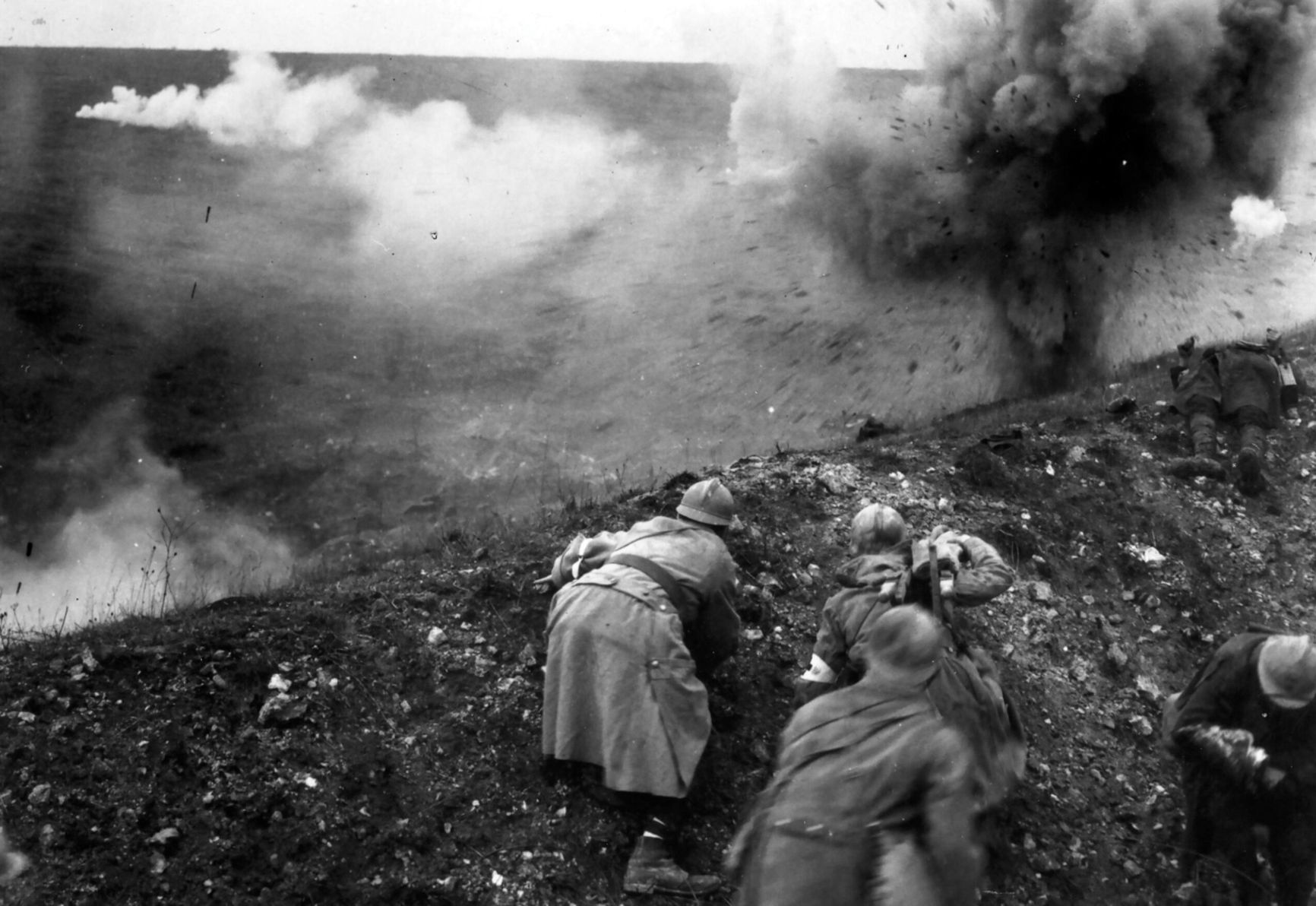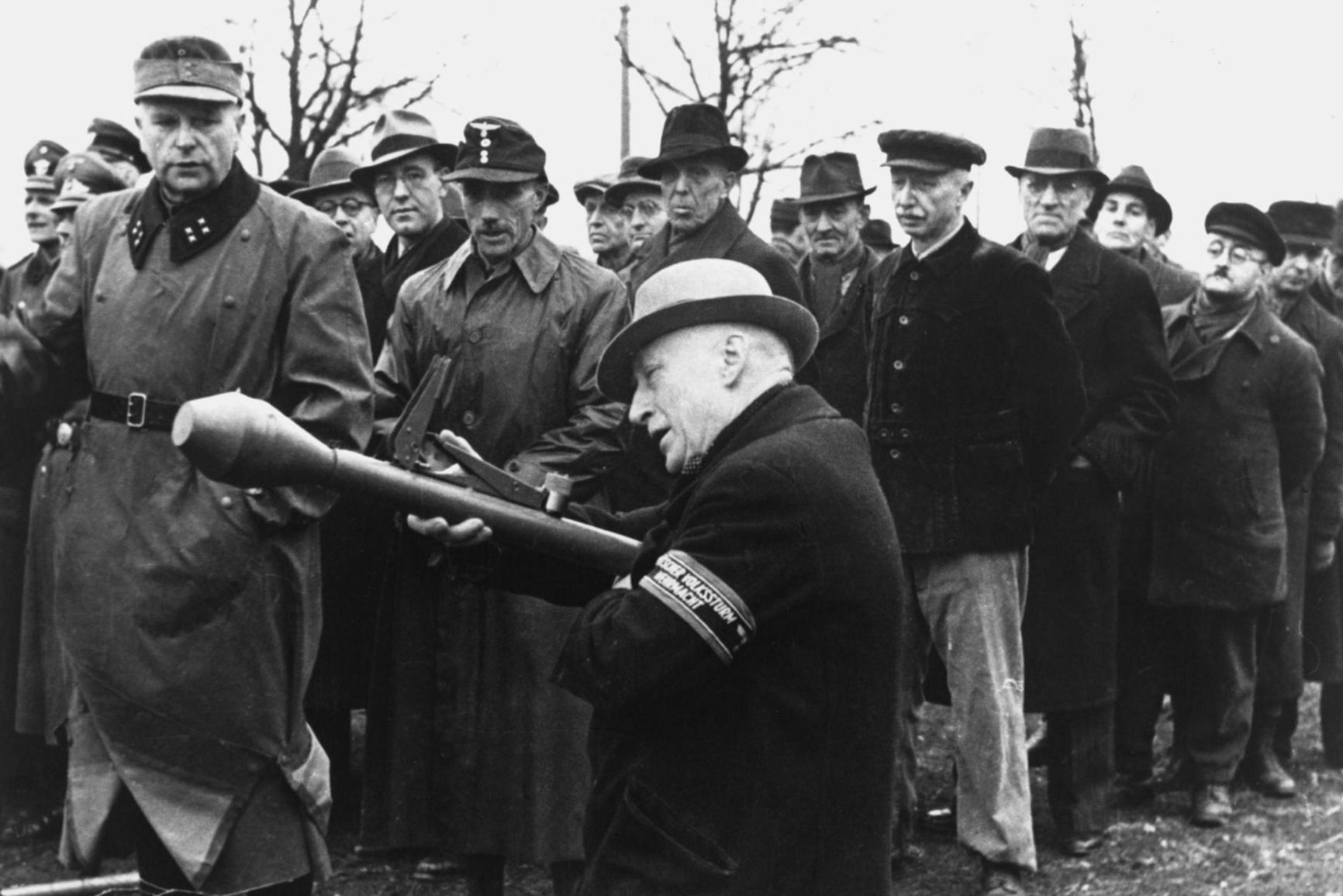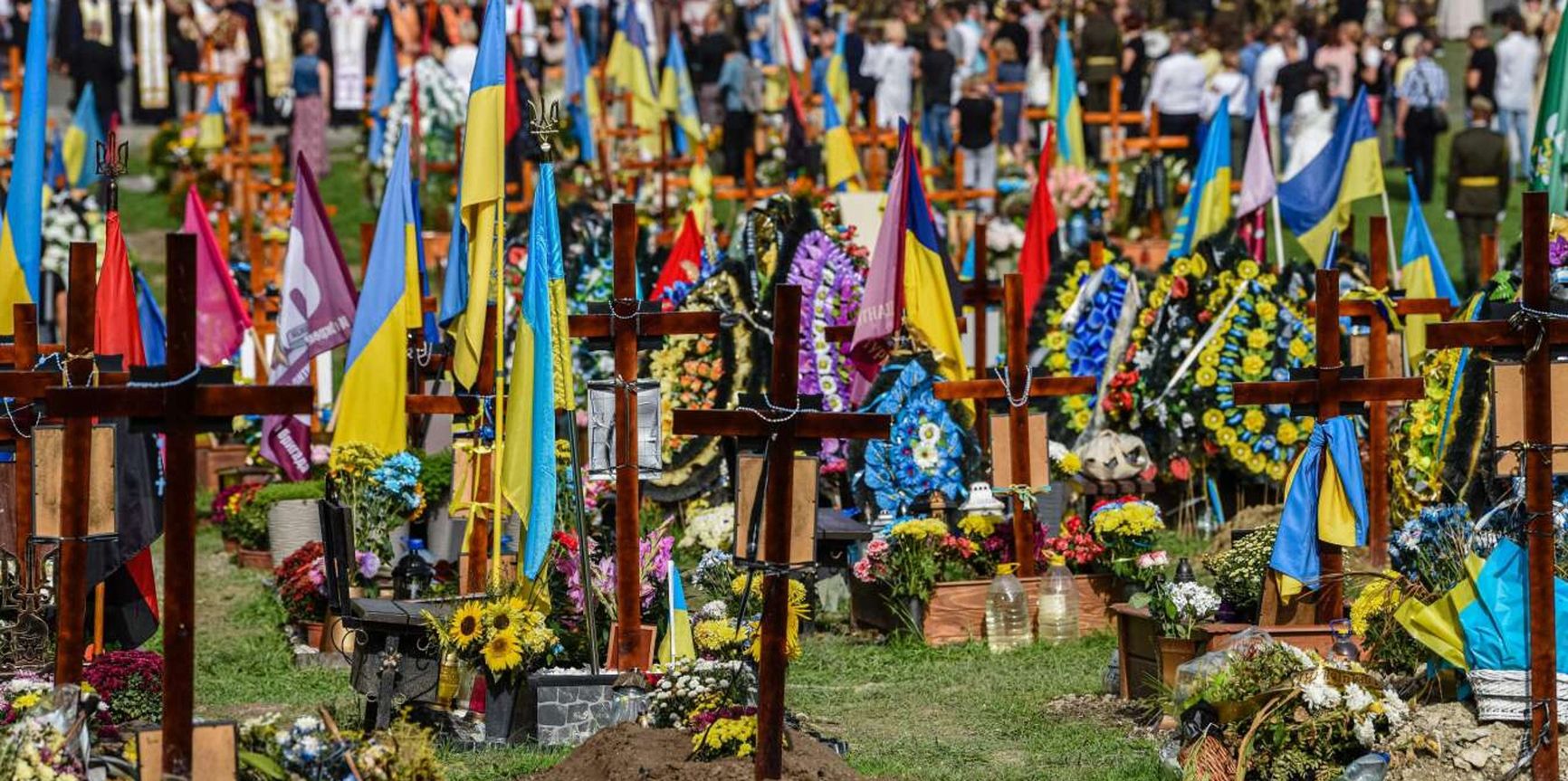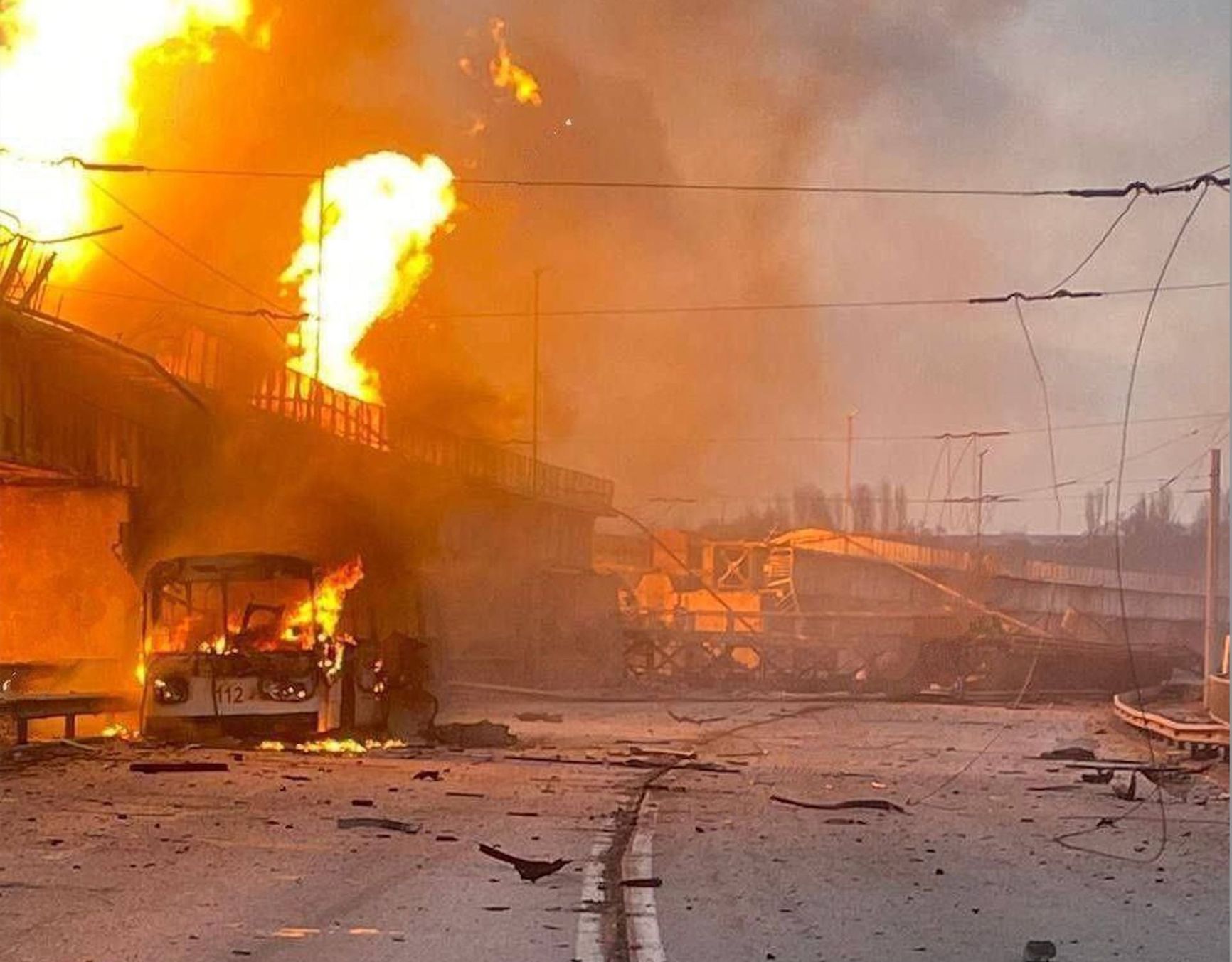

The recent Russian setback in Kharkiv marks the start of another period of stalemate in the Russia-Ukraine war. With neither side able to shift to large-scale maneuver warfare, the conflict is settling into a classic war of attrition. Despite high casualties, both Russia and Ukraine possess enough manpower to sustain the conflict for the foreseeable future — perhaps for decades to come. And yet, history warns that prolonged wars often end before either party reaches total resource exhaustion. Economic and political factors influencing public sentiment may accelerate such a development. For now, both sides appear ready for an enduring conflict, but economic and political factors influencing public opinion can change the current situation. Experience underscores that, when collapse comes, it often arrives unexpectedly.
Content
A war no one wants to wage, and no one can stop
To the last drop of blood or the first wave of desertion
Defeating the enemy's rear
Willpower as a resource
A war no one wants to wage, and no one can stop
In the aftermath of the First World War, military theorists like Russian Alexander Svechin and German Hans Delbrück delineated two primary strategies for winning a conflict: annihilation and attrition. A prime example of annihilation is offered by Napoleon Bonaparte's dazzling victories, which involved the complete destruction of enemy forces in decisive battles or campaigns. Other examples are Nazi Germany's defeats of Poland and France, the Israeli Defense Forces actions in the Six-Day War, and the U.S. invasion of Iraq. All military commanders dream of such triumphs, yet few achieve them — as was vividly illustrated by Russia's catastrophically conceived February-March 2022 offensive, dubbed pejoratively as a “blitzcringe.”
A year later, Ukraine’s leadership and their allies similarly sought swift defeat of Russian forces in the country's south, the theory being that a successful counteroffensive would compel the Kremlin to cease hostilities and negotiate an end to the war on terms favorable to Kyiv. However, this plan, as detailed in one of The Insider's previous reports, also faltered. Consequently, both sides were drawn into a war of attrition.
In such a war, each side seeks to “bleed out” the enemy — militarily, but also economically and politically — until the adversary no longer possesses the capacity to send sufficient weaponry and manpower to the front lines, forcing them either to abandon their goals or to be soundly defeated on the battlefield. Leaders’ ability to effectively manage and deploy the resources at their disposal is decisive, and the side with the greater military and economic power does not always prevail.
The classic example of a war of attrition is World War I — the conflict that gave rise to the term in the first place. Other examples include the American Civil War, the Egyptian-Israeli conflict of 1967-1970 (historically known as the “War of Attrition”), and the Iran-Iraq War. This category also encompasses North Vietnam's actions against U.S. forces, the Afghan mujahideen’s fight against Soviet troops, and, later, the Taliban’s struggle against the America-led international coalition that unceremoniously withdrew from Afghanistan in August 2021. In each of the latter three cases, the side with the advantage in resources eventually lost the political will to sustain military operations.

World War I is considered a textbook example of a “war of attrition”
General Photographic Agency / Getty Images
In wars of attrition, both sides typically suffer more losses than gains, but once involved in the fight, they find it difficult to disengage — in the eyes of their own people, only victory can justify the enormous sacrifices endured thus far. The concept of attrition is often invoked to justify operational failure. In World War I, the French labeled their costly tactical advances as “grignotage” (nibbling), while the Germans used the term “ausblutung” (bleeding out). Over a century later, Russia has deployed related buzzwords like “прогрызание” (gnawing through), “перемалывание” (grinding down), and “выдавливание” (squeezing out).
Parties rarely choose a strategy of attrition consciously
Parties rarely choose a strategy of attrition consciously, as the approach involves prolonged combat with uncertain final costs and outcomes. More often, belligerents are compelled to adopt an attritional approach following an initial failure to annihilate the enemy. The deliberate application of a strategy of attrition requires a considerable degree of cynicism, which is clearly evident, for example, in a quote from the President of Egypt, Gamal Abdel Nasser:
“If the enemy's actions lead to our loss of three thousand people in this campaign, we can still continue the fight because we have human reserves. If our actions lead to ten thousand casualties for the enemy, they will be forced to cease fighting, because they have no human reserves.”
A war of attrition does not automatically imply a stalemate on the front lines. World War II, with its rapid armored breakthroughs and crushing of entire army groups and fronts, exhibited many characteristics of a war of attrition. Essentially, the defeat of Germany and Japan came as a result of their inability to replenish losses, to maintain combat readiness at the required level, and to stave off the collapse of their industrial and social infrastructure.
Quite recently, during the “maneuver period” of the Russia-Ukraine war, Ukraine’s then Commander-in-Chief Valeriy Zaluzhnyi issued orders to “inflict maximum losses” on the invading Russian forces, effectively aiming to exhaust them on the battlefield. This strategy bore fruit, compelling the Russians to “regroup” and make “gestures of goodwill” by withdrawing from certain occupied territories including the Kyiv region and Snake Island.
To the last drop of blood or the first wave of desertion
The most straightforward way to win a war is to kill as many enemy soldiers as possible — as happened in the Paraguayan war of the 1860s, when allied Argentine, Brazilian, and Uruguayan forces killed or wounded up to 90% of Paraguay’s male population. A similar method involves destroying sufficient enemy weaponry and military equipment to render their forces as combat ineffective, which is essentially what happened to Germany over the course of the Second World War. By 1945, the human resources available to the Third Reich were so depleted that the Nazi leadership was forced to conscript elderly men and teenagers into Volkssturm militia units. Once formidable, the tank forces of the Wehrmacht could no longer match the armored might of the Allies, and the Luftwaffe eventually ceded control of the airspace on both fronts — and over Germany itself — to the enemy.

Given the severe shortage of human resources in Germany, Volkssturm units had to be mobilized for combat operations
Picture alliance / akg-images
Perhaps today’s Russian leadership believes that Ukrainian military might will erode in a similar way to that of Nazi Germany. After all, if Vladimir Putin trusts the figures he himself cites — that Ukrainian manpower losses are five times higher than Russian losses — then a Russian strategy of attrition would appear to be justified.
However, more credible estimates of the Ukrainian casualties paint a much less favorable picture for the Russian military. According to data from the pro-Russian source LostArmour, confirmed Ukrainian fatalities were fewer than 47,000 as of the end of May 2024. Even accounting for the possibility that half of such losses go unreported in social media and other public sources (although given Ukraine's relatively high freedom of speech regarding military matters, it is unlikely that unreported losses are anywhere near this high), and assuming a similar number of losses among the wounded who cannot return to duty, the irretrievable losses of the Armed Forces of Ukraine almost certainly do not exceed 200,000.

The irretrievable losses of the Armed Forces of Ukraine are unlikely to be in excess of 200,000
Yuriy Dyachyshyn / AFP
When discussing the need for reinforcements, some Ukrainian sources mention similar figures. According to Ukrainian MP Ruslan Gorbenko, the estimated mobilization requirement for 2024 is 110,000 soldiers. Previously, the Ukrainian publication Teksty assessed Ukraine's mobilization reserve — excluding refugees, men living in Russian-occupied areas, disabled persons, fathers of large families, students, and others enjoying an exemption from service — at nearly 4.9 million people.
These figures suggest that, given the current intensity of combat operations, Ukraine possesses sufficient human resources for nearly 50 more years of fighting. Russian losses — estimated by French authorities in May to be approximately 150,000 fatalities — are likely larger in absolute terms. However, they pale in comparison to the country’s mobilization potential, which former Defense Minister Sergei Shoigu estimated at 25 million people. In short, both sides have the absolute manpower necessary to continue fighting almost indefinitely.
Given the current intensity of combat operations Ukraine possesses sufficient human resources for nearly 50 more years
And yet, in practice, both Ukraine and Russia are currently encountering challenges in replenishing their ranks. The recent Ukrainian mobilization law, enacted at the end of May, has been met with significant public backlash. At the same time, complaints regarding personnel shortages within the AFU have persisted, with similar concerns also emerging on the Russian side.
Russian authorities are employing an information warfare strategy in an attempt to undermine Ukrainian mobilization capabilities, disseminating propaganda videos (1, 2). At the same time, outside observers (1, 2) are increasingly skeptical about Russian claims regarding its recruitment of up to 30,000 volunteer contract servicemen per month — a drive aimed at averting the need for a new wave of involuntary mobilization. The Russian policy of returning wounded soldiers to active duty regardless of their recovery status likely points to a very real manpower shortage.

Experts do not believe in the official volunteer contract servicemen recruitment figures in the Russian Armed Forces
Eduard Sosnin's Telegram channel
Russia is not the first belligerent to face such a challenge. During the American Civil War, shortages of personnel also arose after the widespread adoption of long-range rifled muskets and artillery led to a swift rise in casualties. It was during this period that mandatory military conscription was introduced for the first time in U.S. history. The Confederacy, itself confronted with limited manpower, initiated the policy first. Consequently, there was a significant surge in the numbers of school teachers, pharmacists, state officials, and other “professionals” who were exempt from military service.
Interestingly, in the northern states, conscription was employed not primarily as a direct means of recruiting troops, but as a stimulus to governors to increase volunteer recruitment efforts. Each state received a quota, and any shortfall in the quantity of men going under arms voluntarily was expected to be filled through conscription. As proof that history sometimes rhymes, the threat of mobilization was also used to motivate Russian officials in their efforts to recruit contract servicemen for the current war in Ukraine.
The historical parallels do not end there. The implementation of mandatory conscription in the United States was met with strong opposition, as was the option to buy exemption for the substantial sum of $300. The possibility of implementing an “economic exemption” recently sparked lively debates in Ukrainian society, but the idea has reportedly been abandoned.
In the northern states, conscription led to widespread unrest, including among immigrant communities, as was vividly portrayed in Martin Scorsese's “Gangs of New York.” In the Confederacy, tensions ran even higher: locals armed themselves and established entire districts where recruiters and tax collectors were unwelcome, with the most famous uprising documented in the movie “Free State of Jones.” Today, despite Russian protests against mobilization and conflicts between Ukrainian citizens and military recruiters, existing unrest remains on a level far below the worst case scenarios history has on offer.
Another concern that may arise is desertion. By the end of the American Civil War, archival records indicate that approximately one in seven soldiers from the North and one in nine from the South had abandoned their units. However, desertion had a particularly severe impact on the South due to its overall shortage of troops, significantly contributing to its ultimate defeat. In this context, there is no need to draw parallels with American cinema, as Russian history offers its own illustration: widespread desertion during World War I following the February Revolution of 1917 (as depicted, for instance, in Bumbarash with its iconic song “I don't care, I don't care, tired of fighting”). Desertion rendered the Russian army incapable of both offensive and defensive actions. Essentially, the Russian Empire lost a war of attrition despite having a massive army — albeit one that largely refused to continue carrying out combat operations.
The issue of desertion is a pressing one for both sides of the Russia-Ukraine conflict. In Ukraine, nearly 27,000 criminal cases of desertion have been initiated since the start of the full-scale war. While there is no comparable statistic for Russia, it is known that in March 2024, Russian courts were issuing an average of 34 verdicts per day in such cases. A significant number of Russian deserters and “refuseniks,” those unwilling to continue fighting, are forcibly returned to the front through extrajudicial means. However, there is currently no evidence that desertion critically affects the combat effectiveness of either side.
Desertion does not yet pose a critical problem for either side in the war
The issue of shortages in weaponry and military equipment is notably more critical. Following substantial reductions in the military-industrial capacities of Russia, Ukraine, and Western nations following the end of the Cold War, both sides have struggled to produce sufficient munitions to sustain a conflict of such intensity. Consequently, the AFU remains reliant on supplies primarily from Western countries, and even the substantial aid Kyiv has received has not been sufficient to fully restore its offensive capabilities.
Meanwhile, the Russian military is grappling with shortages of armored vehicles and questions about how to replace worn-out artillery barrels. There is a consensus that reserves of Soviet-era equipment suitable for refurbishment and modernization will only last until 2026, with the potential decline of Russian military capabilities anticipated by 2025. In these circumstances, sustaining further offensive actions and the “grinding down” of Ukrainian units may only be achieved through large-scale ”meat grinder” infantry assaults.
Here, too, there is a historical parallel. In the 1980s, the Iranian regime attempted to compensate for Iraq's technological advantage by using massive “human wave” infantry attacks. However, Iraqi forces ultimately neutralized Iran's gains on Iraqi soil through well-prepared counteroffensives, ultimately concluding the conflict without territorial changes. In World War I as well, the strategy of attrition through the use of infantry waves proved ineffective. Instead, breakthroughs were achieved only through innovations such as stormtrooper tactics, enhanced employment of artillery, and the adoption of basic combined-arms warfare — the effective coordination of infantry, artillery, tanks, and aviation. In its current iteration, Russia's attrition strategy on the battlefield appears unpromising and risks depleting its own forces, thereby heightening the threat of Ukrainian counterattacks — a view shared even among Russian experts.
Defeating the enemy's rear
When achieving complete exhaustion of the enemy in the foreseeable future is not feasible, the focus shifts to undermining the enemy's economic capabilities — their ability to resupply, arm, and support their troops on the front lines. This also includes targeting social infrastructure in an attempt to weaken the morale of the “enemy” population.
Another enduring strategy, known for centuries, is the naval blockade. During the American Civil War, Union forces effectively blockaded Confederate ports, crippling a Southern economy heavily reliant on exporting cotton and tobacco. Trade with European nations plummeted significantly, and importing weapons became substantially more challenging — a severe blow to the South given its limited industrial capacity.
During World War I, the British Royal Navy also executed a successful blockade, effectively halting the import of agricultural products into Germany. This outside constraint coupled with domestic potato crop failures resulted in famine in Germany during the winter of 1916-1917.
Unable to enforce a blockade against Britain, the Germans responded with extensive submarine warfare in both World Wars. This strategy significantly affected the British population's food supply during wartime and complicated efforts to deliver weapons from America to the UK and USSR. However, German submarine operations ultimately did not achieve success, unlike the submarine warfare conducted by the U.S. against Japan.
German submarine operations may not have been enough to deliver victory, but similar American efforts in the Pacific theater played a role in the ultimate defeat of Japan, making it all but impossible for the island nation to access the resources of its colonial empire. It is also worth recalling the Iran-Iraq “Tanker War,” during which both sides attempted, with varying degrees of success, to restrict oil exports from the other's ports.
During the current war, the Russian Black Sea Fleet initially established a successful naval blockade of Ukraine, halting critical grain exports by sea. However, the sinking of the Russian cruiser “Moskva,” the Ukrainian liberation of Snake Island, and the threat posed to Russian ships in the Black Sea by unmanned surface vehicles aka maritime drones have allowed Ukrainian forces to effectively lift the blockade. By 2024, grain export volumes by sea had nearly returned to pre-war levels. Despite strikes on railway infrastructure, Russian attempts to disrupt Western arms supplies to Ukraine also appeared unsuccessful. However, any expectations that international sanctions would cripple the Russian economy similarly failed to materialize.
Ukraine managed to lift the naval blockade imposed by Russia at the beginning of the war
Both sides have achieved significantly more success by targeting each other’s socio-economic infrastructure. While damage inflicted during the initial campaign against Ukraine's energy infrastructure during the winter of 2022-2023 was quickly repaired (this despite reports suggesting Ukrainian authorities were preparing to evacuate Kyiv at the time), renewed strikes in 2024 have caused much more enduring damage by incapacitating a substantial portion of Ukraine's thermal and hydroelectric power plants. Across Ukraine, widespread power cuts affecting both residential and industrial consumers have resumed, prompting the National Bank to revise its GDP growth forecast for 2024 from 3.6% down to 3%. Officials interviewed by the Financial Times are advising Ukrainians to brace for “cold and darkness.” Nonetheless, according to blogger and military technology expert Serhiy “Flash” Beskrestnov, completely disabling Ukraine's military industry through such means will not be feasible thanks to its dispersed nature and the presence of backup power sources.

In early 2024, long-range strikes destroyed a significant portion of thermal and hydroelectric power plants in Ukraine.
Denys Shmyhal, Prime Minister of Ukraine / TG
The British Air Force employed a similar strategy against German industry in 1943, targeting dams and hydroelectric power stations on the Ruhr River with specially designed “bouncing” bombs that skipped across the water to hit the dams. Recovery took many months, but the overall air campaign against the German military-industrial complex was largely unsuccessful. Nor did the bombing of German cities lead to widespread protests against the war.
The situation only shifted when the Americans focused on targeting German refineries and synthetic fuel plants. These large facilities were highly vulnerable and, unlike military factories, could not be moved underground. By 1945, airstrikes had almost completely deprived the Wehrmacht of fuel and caused a transportation collapse that finally resulted in a decline in industrial production.
By 1945, airstrikes had almost completely deprived the Wehrmacht of fuel and caused a transportation collapse, leading to a decline in industrial production
Ukrainian forces are using a similar strategy by targeting Russian refineries and fuel depots with kamikaze drones. This prolonged campaign has significantly decreased Russia's production of gasoline and diesel fuel, causing Rosstat to cease publishing statistical data for the production of gasoline, a component that is crucial for both industry and military operations, where many non-standard vehicles and generators are used.
Despite this development, Russia has managed to avoid a severe fuel shortage, partly thanks to imports from Belarus and Kazakhstan. The reduction in fuel exports is expected to impact Russian budget revenues, though not dramatically enough to precipitate an economic collapse.
A more pressing issue for Russian military production is the country’s labor shortage, which has driven up wages in the civilian sector, thereby making military-industrial work less appealing. Although the Russian economy remains resilient in the face of growing structural problems, Ukraine's defense industry simply lacks sufficient funds to bring all of its enterprises fully online. A proposed solution calls for European countries to place orders with Ukrainian military manufacturers, then donate the arms and ammunition produced to Kyiv.
Willpower as a resource
Beyond military, economic, and human resources, intangible reserves of political will and legitimacy among leaders, along with the public's willingness to continue making sacrifices for victory, are crucial.
For example, the involvement of Russia, Germany, and Austria-Hungary in World War I all ended in revolutionary upheavals back home. In 1864, U.S. President Abraham Lincoln’s re-election was threatened by a stalemate on the front lines and rising prices in the rear. Only major victories like the capture of Atlanta ensured the defeat of the Democrats, who favored peace negotiations. Notably, Lincoln’s success was largely due to the first-ever absentee vote held within an active military, where support for the Commander in Chief and a commitment to continue the war through to victory were strong.
In the context of the Russia-Ukraine war, the leaders’ mission to maintain public support is much easier as the level of economic and societal mobilization is significantly lower than during the world wars. Russia’s military budget for 2024 is 6% of GDP, while Ukraine’s is 22% of GDP. By comparison, U.S. military spending during World War II exceeded 40% of GDP.
According to estimates from the Telegram channel “Demography Dropped,” around 2% of Russia's male population aged 18 to 49 is involved in the war, while in Ukraine, this figure ranges from 7% to 9%. In comparison, during World War II, the U.S. drafted up to 20% of its male population in the same age group. Despite economic difficulties in both countries, there are no discussions about introducing food rationing or similar restrictions. The war's full impact is primarily felt by those in frontline areas, military personnel, and their families.
The economic and societal mobilization levels in Ukraine and Russia are much lower than during the world wars
In this context, it is not surprising that a large-scale survey shows most Ukrainians still support President Zelensky, oppose holding presidential and parliamentary elections during the war, do not see the level of mobilization as excessive (as of February this year), believe in Ukraine's victory and the restoration of control over territories at least up to the de facto borders of February 23, 2022, and are willing to endure personal sacrifices such as higher prices, taxes, or utility bills.
While these indicators have declined since 2022, any talk of a legitimacy crisis in Kyiv is premature, no matter what the Kremlin's informational operations may suggest. The implementation of the Ukrainian mobilization law, which imposes significant restrictions on draft dodgers, did not result in noticeable protests, even if it was reported that more people were mobilized in May than in the previous four months combined.
On the other side, it is difficult to determine to what extent Russian citizens are willing to endure personal hardships to sustain the war. The Russian leadership is visibly avoiding a new wave of mobilization, despite it being a solution to most personnel shortages.
It is not uncommon for a population to desire peace yet be willing to continue a war until they achieve what they perceive as a just conclusion. For example, in 1917, strikes and mutinies among French soldiers led to a government crisis and a change in leadership, but not to capitulation, as the terms would not have been acceptable to the protesters themselves.
The stalemate between Russia and Ukraine could potentially last for many years, as both sides have the military, economic, and moral resources to sustain the conflict. However, history shows that when a decisive turning point comes, it often appears suddenly. While a prolonged war between Russia and Ukraine is possible, it is not inevitable.